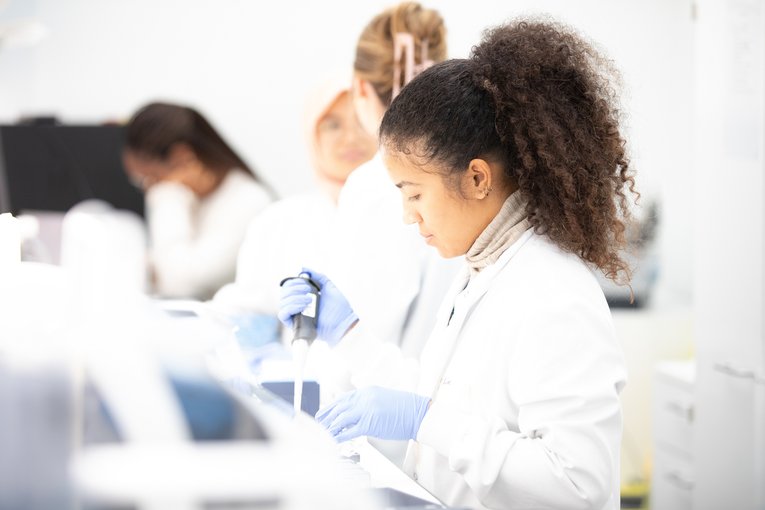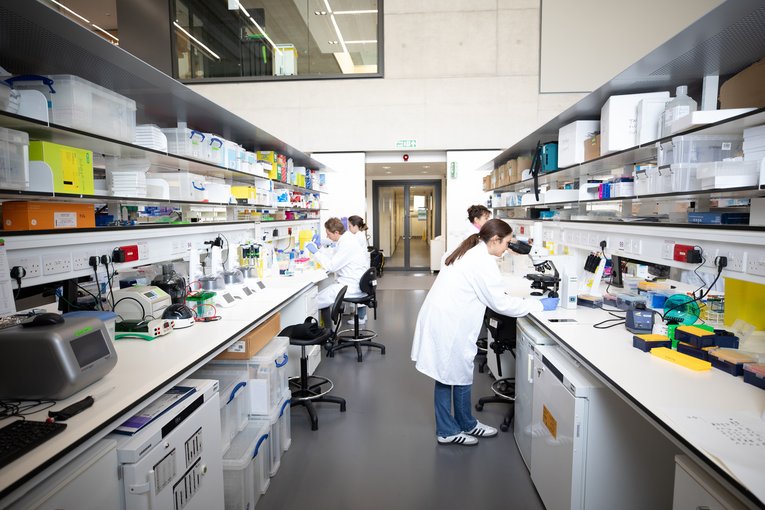
https://www.gosh.nhs.uk/our-research/our-research-infrastructure/nihr-great-ormond-street-hospital-brc/brc-news/getting-hands-research/
Getting hands-on with research
23 Oct 2018, 2:58 p.m.
Last weekend, we opened our doors to over 300 visitors for the annual Family Fun Day hosted by the National Institute for Health Research (NIHR) Great Ormond Street Hospital (GOSH) Biomedical Research Centre (BRC). The event, which is now in its fourth successful year, gives young people and their families the chance to go behind the scenes of research at GOSH and discover the fascination of science by getting hands-on with a range of interactive activities.
Visitors were able to try on the artificially intelligent tracking bands that are currently being used to monitor movement in a clinical trial for Duchenne’s muscular dystrophy at GOSH, and saw how researchers use 3D printers to create models of children’s hearts, helping cardiac surgeons prepare for operations.
In the Science Quest treasure hunt visitors were able to meet real GOSH BRC researchers and discover how their work helps find new treatments for children with rare and complex conditions such as juvenile dermatomyositis (JDM) a rare skin disorder. There was also a chance to dress up like a scientist and see how blood samples are tested in our clinical labs, as well as the opportunity to take part in a theatre project "Jude Starbeam and the Shadow Planet" - led by On the Button theatre group and inspired by stories of young people growing up with a brain injury and developed with GOSH BRC researchers.
Groundbreaking research
The GOSH BRC, which is currently running over 800 research projects, aims to increase understanding of the underlying causes of childhood conditions and accelerate the development of new treatments for patients who need them.
Visitors were given the chance to learn more about some of these pioneering projects through the activities on the day. The Growing Organs activity showed how stem cells are being used to repair damaged organs in children with inherited or acquired conditions. Most recently this technology has been used by GOSH BRC researchers to grow a piece oesophagus in the lab for the first time, paving the way for new treatments for children with gut conditions.
The team from GOSH’s gene sequencing facility GOSgene showed visitors how to extract DNA from strawberries and explained how they have developed a cutting-edge method of genetic sequencing which helped saved the lives of critically-ill children in intensive care.
Inspiring the next generation
On leaving the event one young visitor commented “I enjoyed it so much! It was very interesting because I want to be a doctor when I grow up”. One mum stated that she “liked the fact that a world which is hidden away from people was made accessible” and another commented “Really informative day for adults and children alike!”.
Deirdre Leyden, GOSH's Patient and Public Involvement in Research Lead, said “The event is part of our ambition to encourage conversations between patients, the public and GOSH researchers. It was amazing to see visitors of all ages getting stuck in to the activities and learning more about why research is vital for improving the lives of patients at GOSH and children across the world.”

When it is OK to link our data?
A guide for researchers by children and young people containing key principles which reflect children’s and young people’s views about when it is ok to link their data for research.

NIHR launches £13.7m investment into brain tumour research
The National Institute for Health and Care Research (NIHR) has announced a £13.7 million investment that will support ground-breaking research to develop novel brain tumour treatments in the UK.

New consortium aims to help improve care for arthritis patients
A new UK-led research group, including Great Ormond Street Hospital and University College London, aims to improve the lives of children, young people and adults with arthritis by defining for the first time what being in ‘remission’ from arthritis truly

Update for patients and families on industrial action - December 2025
As you may be aware, some of our Resident Doctors will be taking part in planned industrial action from 7am on Wednesday 17 December to 7am on Monday 22 December.


